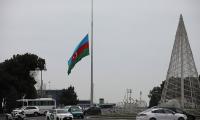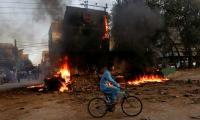As Lahore continues to top global air pollution charts, with an Air Quality Index (AQI) frequently surpassing hazardous levels, the city’s residents are left gasping under the weight of a smog emergency. The AQI levels have hit unprecedented highs, soaring past 1,000 and peaking at a staggering 1,194, making Lahore one of the most polluted cities in the world. Despite a slew of government measures and restrictions aimed at curbing pollution, the smog is only intensifying. This winter smog is a toxic mix of fog and pollutants, exacerbated by vehicle emissions, industrial smoke, and the burning of crop stubble – a seasonal phenomenon that has now become a deadly, predictable cycle. The government has responded with temporary measures like school closures, a ‘green lockdown’ in the worst-affected zones, and restrictions on construction activities and certain types of transportation. While these actions are a step in the right direction, they appear insufficient against the scale of the crisis.
The health impacts of such extreme pollution are dire. Fine particulate matter (PM2.5), which has reached levels over 122 times the World Health Organization’s recommended limits, poses a serious risk to human health. Children, the elderly, and those with preexisting health conditions are particularly vulnerable. However, Lahore’s pollution crisis is not solely the product of local sources. Cross-border agricultural burning from neighbouring regions, including India’s Punjab and Haryana states, also contributes significantly to the toxic air. This transboundary nature of pollution has sparked calls for climate diplomacy to address the issue collectively; encouragingly, Punjab Chief Minister Maryam Nawaz has been proactively calling for such diplomacy. Given that air pollution respects no borders, coordinated efforts between the two countries could mitigate its impact. A regional framework for tackling emissions could help reduce the worst effects of the smog, allowing for shared strategies and timely interventions.
Yet, regional cooperation alone will not solve Lahore’s environmental woes. The persistent crisis highlights the need for long-term policy reform at home. The government must prioritise a shift towards cleaner energy sources, invest in sustainable public transportation, and enforce stricter emission standards for vehicles and industries. Effective action requires not just temporary restrictions, but a fundamental transformation in how Pakistan approaches environmental policy, particularly in its urban centres. Again encouragingly, Punjab has already come up with a comprehensive plan – the Chief Minister Punjab’s Roadmap for Smog Mitigation in Punjab 2024-2025 – with a list of sector-specific measures to counter the smog problem. Penalising stubble burning and encouraging farmers to adopt sustainable practices should be prioritised but that must be accompanied by ensuring farmers have a viable alternative to stubble burning. The provincial and federal governments must also take steps to improve urban planning, invest in green spaces, and implement regular air quality monitoring with public access to real-time data. While the ‘green lockdowns’ and school closures reflect the government’s acknowledgement of the crisis, such reactive measures alone will not solve Lahore’s pollution problem. For that, structural changes, cross-border cooperation, and a strong commitment to environmental sustainability are imperative.
Even on social media platforms, women journalists face indescribable abuse
KP govT unveils roadmap which highlights measures such as special security force, deweaponisation
Christians and other minority groups face discrimination when it comes to employment, housing, education and security
PTA’s rationale is to monitor VPN traffic to ‘address security concerns’, but in reality, this could lead to...
Deaths due to militant attacks have now soared well past 1000 mark
Dialogue between government and opposition is cornerstone of any functioning democracy







